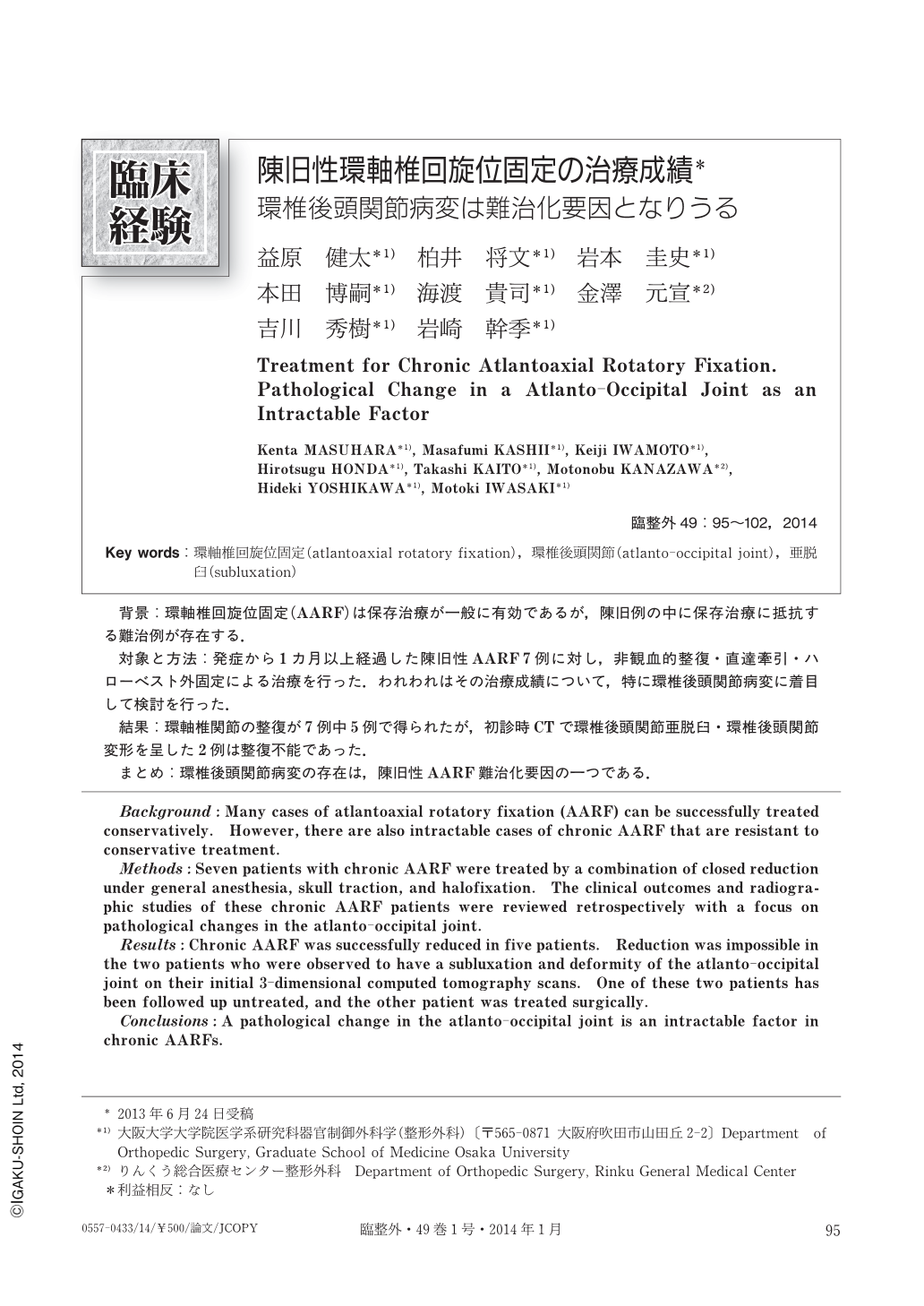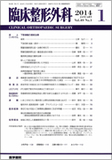Japanese
English
- 有料閲覧
- Abstract 文献概要
- 1ページ目 Look Inside
- 参考文献 Reference
背景:環軸椎回旋位固定(AARF)は保存治療が一般に有効であるが,陳旧例の中に保存治療に抵抗する難治例が存在する.
対象と方法:発症から1カ月以上経過した陳旧性AARF7例に対し,非観血的整復・直達牽引・ハローベスト外固定による治療を行った.われわれはその治療成績について,特に環椎後頭関節病変に着目して検討を行った.
結果:環軸椎関節の整復が7例中5例で得られたが,初診時CTで環椎後頭関節亜脱臼・環椎後頭関節変形を呈した2例は整復不能であった.
まとめ:環椎後頭関節病変の存在は,陳旧性AARF難治化要因の一つである.
Background:Many cases of atlantoaxial rotatory fixation (AARF) can be successfully treated conservatively. However, there are also intractable cases of chronic AARF that are resistant to conservative treatment.
Methods:Seven patients with chronic AARF were treated by a combination of closed reduction under general anesthesia, skull traction, and halofixation. The clinical outcomes and radiographic studies of these chronic AARF patients were reviewed retrospectively with a focus on pathological changes in the atlanto-occipital joint.
Results:Chronic AARF was successfully reduced in five patients. Reduction was impossible in the two patients who were observed to have a subluxation and deformity of the atlanto-occipital joint on their initial 3-dimensional computed tomography scans. One of these two patients has been followed up untreated, and the other patient was treated surgically.
Conclusions:A pathological change in the atlanto-occipital joint is an intractable factor in chronic AARFs.

Copyright © 2014, Igaku-Shoin Ltd. All rights reserved.


